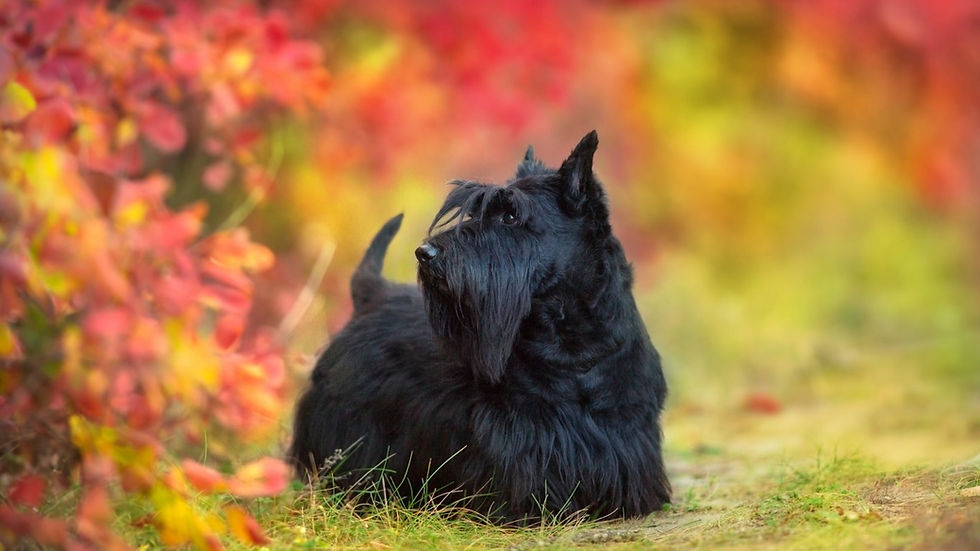Click the tartan to view its entry in The Scottish Registers of Tartans which includes registration details, restrictions, and registrant information.
Unregistered tartans may link to one of the web's online design environments for similar information.
For any questions about reproduction of designs or weaving of these tartans, please contact the registrant directly or via this website.
Shetland Wool Days
"Under the fence
Catch the sheep
Back we come
Off we leap!"
~ Traditional knitting teaching rhyme
Get out your knitting needles! Shetland Wool Week is a world-renowned celebration of Britain’s most northerly native sheep, the Shetland textile industry, and the rural farming communities that have long sustained it. This tartan, created through a joint partnership between a Japanese and Scottish company, takes its name from the Scottish Gaelic for “hair of the sheep” or “woolly one.”
For generations, knitters in the Scottish Isles have drawn inspiration from the wide range of natural wool colors found among Shetland sheep. These fine-fleeced animals produce shades that seem almost infinite: the inky tones of Shetland black, the soft greys of shaela and sholmit, the warm browns of moorit, the fawn hues of mooskit and eesit, and the creamy brightness of unbleached white. Each color carries its own history, echoing the rugged landscapes where these hardy sheep graze.
But Shetland’s legacy is more than just its wool—it is also its knitting traditions. Distinctive Scottish knitting styles have developed in different regions, each reflecting local culture and necessity. Fair Isle knitting, originating from the small Shetland island of the same name, is perhaps the most famous. It is characterized by intricate patterns in multiple colors, often using only two shades per row but building up complex geometric motifs that are instantly recognizable worldwide. Beyond Fair Isle, the gansey or fisherman’s sweater of the Scottish east coast tells its own story, with dense, textured stitch patterns designed to withstand the harsh sea air. In the Highlands, cabled and twisted stitches brought warmth and visual richness, while in the Borders, lace knitting flourished—delicate openwork shawls that showcased both skill and artistry. Baaa! Baaa! Wooly ones and knitters alike! 🖤 💚 ❤️ 💛 💙 🧶 🧶 🧶 🐑 🐑 🐑
Wool is fiber obtained from sheep, of course, but also from other animals, including cashmere and mohair from goats, qiviut from muskoxen, angora from rabbits, and other types from camelids (camels, llamas, alpacas, vicuñas, and guanacos). Although sheep were domesticated some 9,000 to 11,000 years ago for their meat and milk, archaeological evidence suggests selection for woolly sheep (which originally were more hairy than wooly) may have begun around 6000 BC.
From the official register:
"This tartan was created for Takihyo Company Ltd of Japan in partnership with House of Tartan Limited of Scotland. It is the first in a collection of contemporary tartans based on the traditional and classic. The tartan draws its name from the ancient Gaelic term for 'hair of sheep'; wool being the foundation of Scotland's renowned tartan industry."
Up to the Iron Age, the sheep of the British Isles and most of Europe were small, short-tailed, and variable in colour. These were gradually displaced by long-tailed types, leaving the short-tailed sheep restricted to the less accessible areas. One such was the Scottish Dunface (also known as Old Scottish Short-wool, Scottish Whiteface, or Scottish Tanface), which until the late eighteenth century was the main breed throughout the Highlands and Islands of Scotland, including Orkney and Shetland.
In the 17th and 18th centuries, knitting became an important industry amongst the Scottish Isles with entire families involved in making sweaters, accessories, socks, and stockings. A distinctively Scottish knitting decorative technique, Fair Isle, is named for the island.
Original Fair Isle techniques and colours made use of the natural colours of the Shetland sheep and the local dyestuffs of the islands. The names for the colours of Shetland wool are still called:
Light Grey
Grey
Emsket – dusky bluish-grey
Shaela – dark steely-grey, like black frost
Black
Musket – light greyish-brown
Fawn
Mioget – light moorit (yellowish-brown)
Moorit – shades between fawn and dark reddish brown
Dark Brown
For an overview of regional knitting in the British Isles & Ireland from the Victoria & Albert Museum, click the knitted wool!









